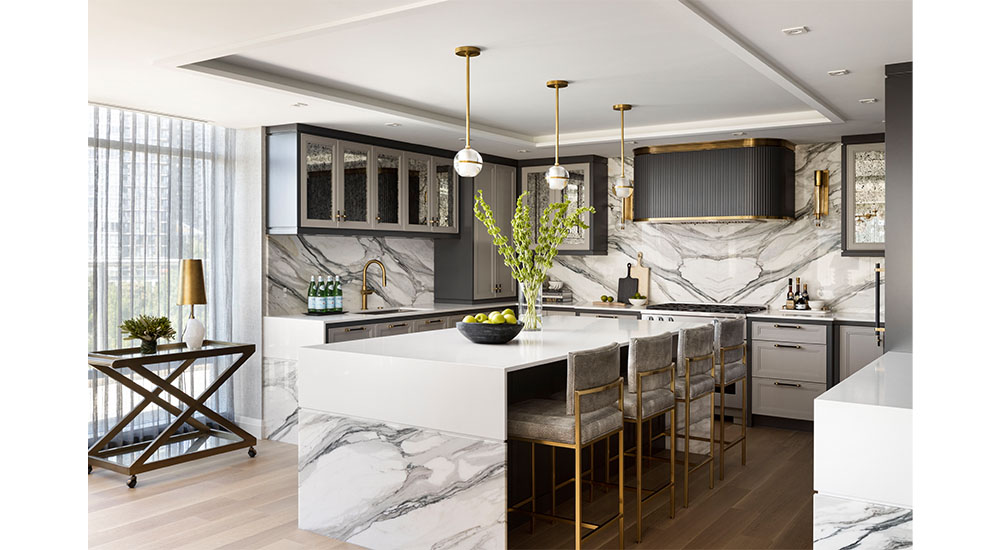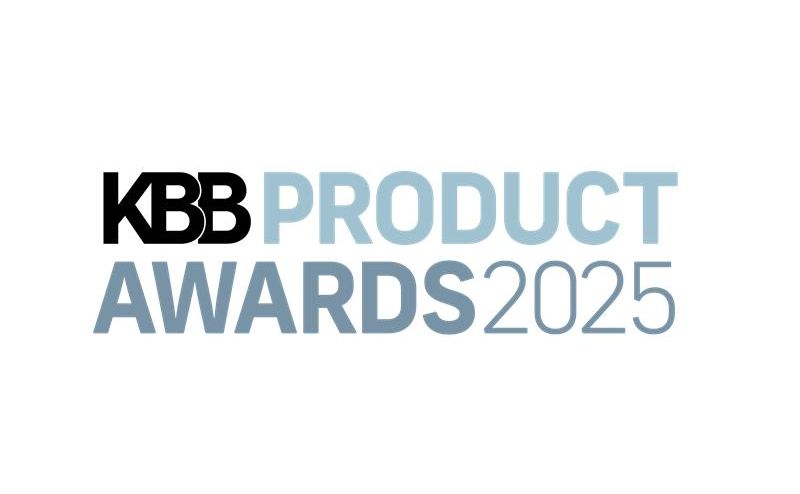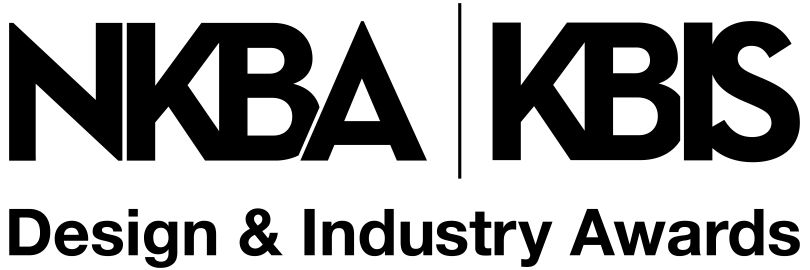In the ever-evolving world of kitchen and bath design, surfaces play a starring role – functionally and visually. They ground the room, set the tone and ultimately must stand the test of time, both in durability and style. As lifestyles shift and technology advances, so too do the materials and design philosophies guiding the choices in surfaces. For professional designers, staying attuned to the latest trends in surfacing design and materials isn’t just about following a fleeting fashion; it’s about orchestrating environments that are as innovative as they are enduring.
Above: Plain and figured stone, antiqued mirror, pale woods – this kitchen by Saskatoon-based Atmosphere Interior Design has a blend of surfaces that’s both bold and intelligent. atmosphereid.ca Photo: Courtesy of Atmosphere Interior Design
Surfaces and Material Science
The demand for performance and sustainability – among clients as well as designers – is driving innovation in surfacing materials. Ultra-compact surfaces like sintered stone are gaining rapid adoption among designers who value resilience. These materials are heat-resistant, non-porous and available in large slabs, making them ideal for seamless counters, shower walls and exterior applications. Likewise, solid surface materials continue to evolve, with new colors, patterns and matte finishes that defy their earlier utilitarian reputations.
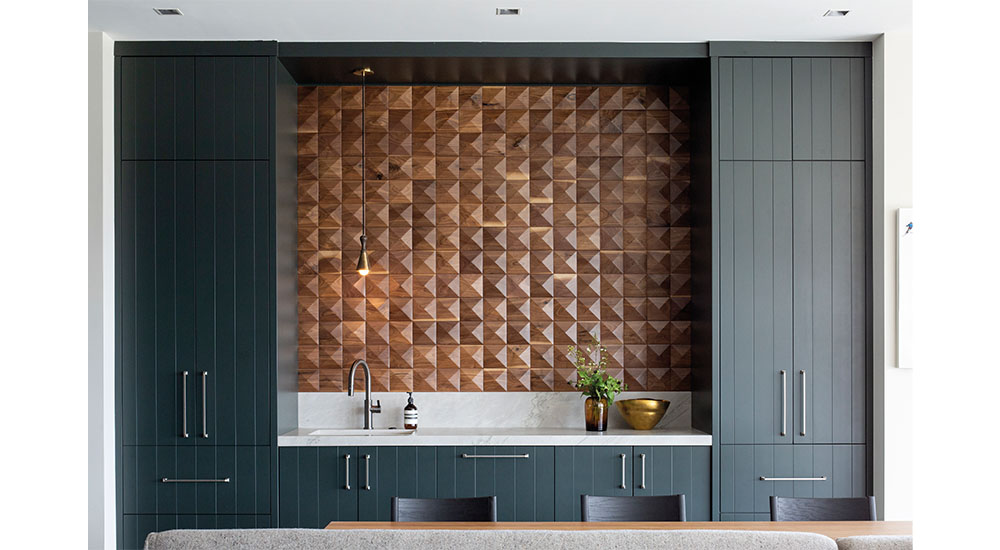
To add dimension and material variety to this space, Hudson + Bloum Design used light-catching Celestio Legno Pinnacle wood wall panels from DUCHATEAU. The pyramidal profile is a compelling contrast to the irregular grain of the wood. duchateau.com Photo: Michelle Rose/Michelle Rose Studio
As boundaries between materials, technologies and imagination dissolve, the array of choices available to designers has never been richer. Among these, bio-based materials are at the forefront. Derived from renewable natural resources such as plant fibers, fungi and agricultural byproducts, these materials not only reduce dependency on finite raw materials but also offer lower embodied carbon and, in some cases, full compostability at end of life. Innovations in this space include surfaces crafted from mycelium, bamboo, cork and algae, each bringing unique properties of durability, texture and sustainability.
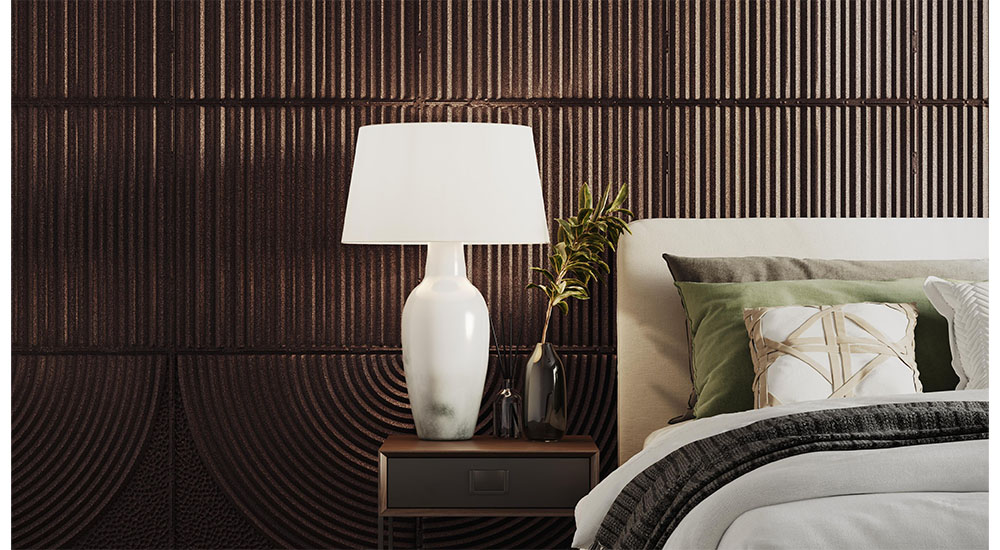
Clodagh created the Tara collection for AMERICAN TIN CEILINGS. Low-maintenance and easy to clean, the metal panels can be used on walls, as well. “Noise control is critical in kitchens and baths,” said the designer, pointing out the panels have optional acoustical backing that helps absorb sound. americantinceilings.com Image: Courtesy of Clodagh
Surfaces using recycled and upcycled materials are also on the rise. Clients are increasingly eco-conscious, requesting countertops made from recycled glass, paper composite or reclaimed wood. Manufacturers are responding with surfaces that don’t just look beautiful – they tell a story of sustainability. Some even offer traceable supply chains and certifications like GREENGUARD or Cradle to Cradle, allowing designers to specify with confidence.
Smart Surfaces: Environmental Intelligence

Ecocarat tiles by INAX (part of the LIXIL family) are made from allophane, a naturally porous mineral contained in volcanic ash. This composition allows the tiles to absorb VOCs (volatile organic compounds), control humidity levels and reduce air-borne odors. inax.com
Once simply passive slabs, surfaces are now becoming interactive. A breakout hit at KBIS in 2024 with its counter-embedded wireless charging device, this year FreePower teamed up with Cosentino and James Martin Vanities to offer a bathroom furniture package that offers all-in-one convenience.
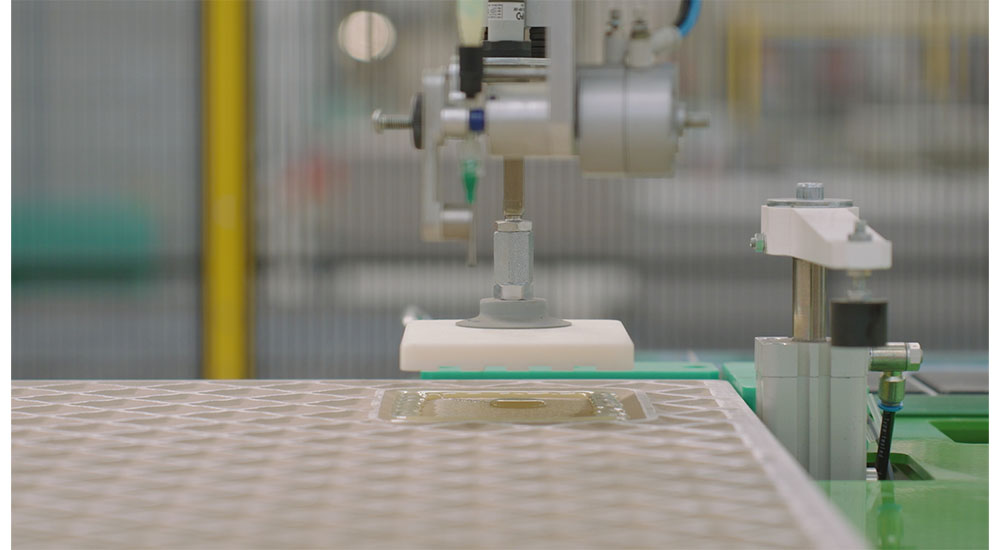
GRUPPO ROMANI’s Smart Tiles are embedded with sensors that can help measure building performance and safety. The ceramic slabs covey data to cloud-based operating systems and apps. rupporomanispa.com
Smart Tiles from Gruppo Romani take the integration of technology into surfacing into a broader direction. Placed in a niche on the back of a ceramic slab, a tiny electronic card fitted with MEMS (micro electromechanical system) sensors can measure a variety of building functions, and transfer the data to the cloud. When installed as part of a ventilated wall, it can track temperature, humidity, dew point and shocks or deformation induced by seismic events. In a floating floor system, the chip can monitor load and movement, and can be programmed to activate alarms warning of dangerous circumstances.
Surfacing Systems
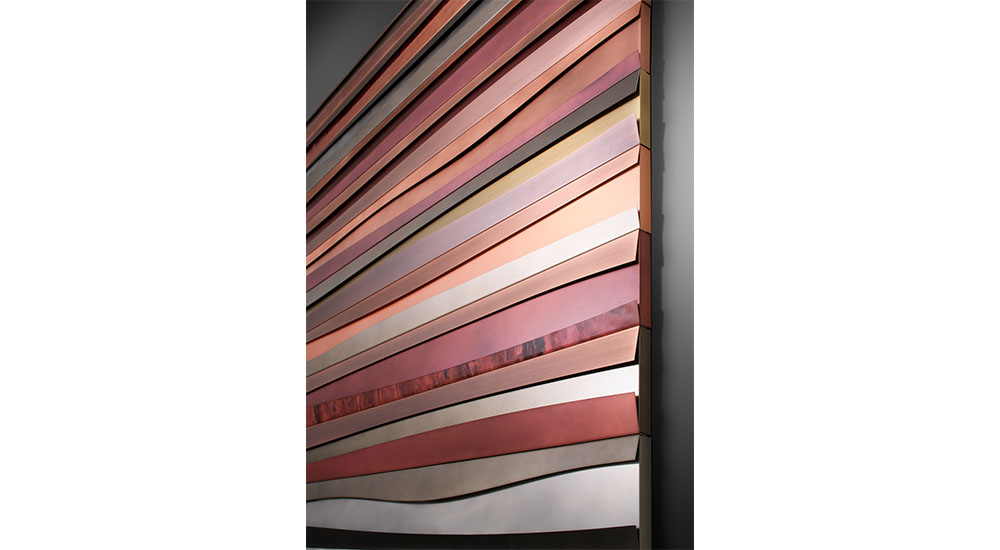
Designed by BoattoMartino Studio for DE CASTELLI, Sedimenti layers metal slats in a range of colors and finishes into three-dimensional wall panels. A rack system is used to attach them to the wall. decastelli.com
For almost-ever, grout, glue and nails have been the go-to techniques for holding surfaces of all materials in place. Not only do these methods require skilled installers, but they are also permanent and costly change or update. Magnetic attachment systems can not only streamline installation but also allow aesthetic updates as needed. MagFace is a magnetic dry-lay system – no glue or mortar needed – for porcelain and sintered stone surfaces, as well as ceramics and glass. It can be utilized across the board: for walls, floors and countertops. A similar system, MagClack, is available for other materials, including wood, LVT and PVC products.
Silica-Free Surfaces: Advancing Safety and Sustainability
With growing awareness of the health risks associated with crystalline silica dust in traditional engineered stone, the industry is embracing silica-free surfaces. These innovative materials are engineered to eliminate or drastically reduce the silica content found in conventional quartz products, making them a safer choice for both fabricators and end-users.

CAESARSTONE has announced its new ICON collection, a line of crystalline silica-free products that incorporate up to 80% recycled materials. The brand is looking to transition its existing quartz surfaces with this new formulation, as well. caesarstoneus.com
Silica-free surfaces are often made from alternative minerals, resins and recycled materials, while offering the same visual appeal and performance as quartz. They come in a wide variety of colors and patterns, allowing designers to specify luxurious, resilient countertops and panels without compromising on workplace safety or indoor air quality. This shift is not just a response to regulation but a proactive move toward healthier, future-focused design practices.

Using 3D printing technology and full body veining design, Victoria by NEOLITH is created particle by particle to achieve a high degree of realism. neolith.com
For professional kitchen and bath designers, surfacing remains one area where material stories are as layered as spaces themselves. By staying engaged with emerging trends and new technologies, designers can craft interiors that not only look remarkable today but will remain relevant and resilient for years to come. The quest for the perfect surface is no longer merely about durability or beauty; it is an exploration of conscience and creativity, with each selection shaping not just the look, but the legacy, of contemporary interiors.

